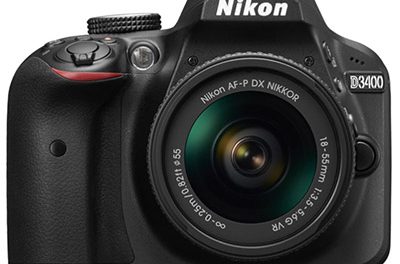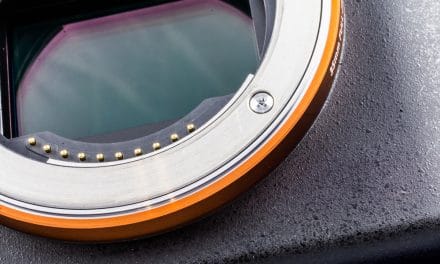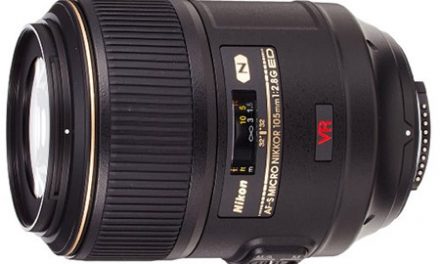The wide-angle lens is a staple of landscape photography. If you want to capture the vastness of the landscape in your photos, a wide-angle lens will be your choice. Although other types of lenses are certainly useful as well, many landscape photographers find that they use a wide-angle lens more than any other.
If you are looking for a quality wide-angle lens to use with a Canon DSLR, you will, fortunately, have several good options. With that in mind, getting a good quality wide-angle lens should be a priority when you are budgeting how much to spend on different lenses and accessories. When it comes to choosing a wide-angle lens to buy, the process can be quite confusing.
There are so many options and a lot of different factors to consider.
This article offers a brief review of 5 lenses that we feel are among the best options available. All of these lenses will allow you to capture high-quality photos that you can be proud of.
You may be interested in other articles in this series:
- Reviews of the Best Standard Zoom Lenses for Canon DSLRs
- Reviews of the Best Telephoto Lenses for Canon DSLRs
- Reviews of the Best Macro Lenses for Canon DSLRs
- Reviews of the Best Fisheye Lenses for Canon DSLRs
- The Best Lenses for Landscape Photography
The Best Wide Angle Lenses for Canon
5. Canon EF 17-40mm f/4L USM Lens
Canon’s 17-40 f/4 lens is a very popular wide-angle option. As a Canon “L” series lens, it meets high-quality standards. It is also very affordable for an “L” series lens, and the 17-40mm focal range gives you more flexibility than any of the other lenses on this list. On the downside, it does not offer image stabilization.
Although it is an “L” series lens it is not quite as high-quality as the other Canon lenses on this list, in terms of corner-to-corner sharpness.
- For full-frame or APS-C sensors
- focal range: 17-40mm
- aperture range: f/4 – f/22
- image stabilization: no
- 77mm front filter diameter
- weight: 1.05 lbs.
4. Sigma 24mm f/1.4 DG HSM Art Lens for Canon EF
In recent years Sigma has been creating an excellent lens in their “art lens” series. The 24mm prime lens is an excellent wide-angle option (if you need a zoom lens, Sigma also makes a 12-24mm art lens that is quite good). This lens offers a maximum aperture of f/1.4, which can come in handy for creating narrow focal planes or shooting in low light.
It is also capable of excellent sharpness and image quality.
- For full-frame or APS-C sensors
- focal range: 24mm
- aperture range: f/1.4 – f/16
- image stabilization: no
- 77mm front filter diameter
- weight: 1.46 lbs.
3. Tamron SP 15-30mm f/2.8 Di VC USD Lens for Canon EF
Possibly the best third-party wide-angle lens is the Tamron 15-30mm f/2.8. It offers excellent image quality and sharpness, and a nice focal range, with a maximum aperture of f/2.8. And all of this comes at an affordable price. Unlike the two lenses that we’ve looked at previously, this one does offer image stabilization. It also allows you to go wider than both the Canon 17-40mm and the Sigma 24mm. Although the 2mm difference between 15mm and 17mm seems small, it can actually make a noticeable difference.
On the downside, it is a heavy lens. It also has a bulbous front element, so you cannot use traditional screw-on filters.
- For full-frame sensors
- focal range: 15-30mm
- aperture range: f/2.8 – f/22
- image stabilization: yes
- no filter thread
- weight: 2.43 lbs.
2. Canon EF 16-35mm f/4L IS USM Lens
The Canon 16-35mm f/4L is an excellent quality lens and is our choice as the best option for the money. It is priced a little higher than the Canon 17-40mm f/4L but offers superior sharpness and image quality. Canon also makes a 16-35mm f/2.8L, which gives you more flexibility in terms of aperture, but by all reports, the f/4 is a sharper lens, and it is also cheaper. For landscape photographers, the extra sharpness will typically outweigh the difference between the max apertures.
Another benefit of this lens is that you can use standard screw-on filters. It also features image stabilization.
- For full frame or APS-C sensors
- focal range: 16-35mm
- aperture range: f/4 – f/22
- image stabilization: yes
- 77mm front filter diameter
- weight: 1.35 lbs.
1. Canon EF 11-24mm f/4L USM Lens
Our choice as the best wide-angle lens for Canon DSLRs is the Canon 11-24mm f/4L. This lens offers extremely high-quality images and excellent sharpness. It also goes super wide, all the way to 11mm. The next widest lens on this list only goes to 15mm, so this one really stands out.
The biggest downside of this lens is the price tag, at more than double the price of the Canon 16-35mm f/4L. The price puts it out of reach for most enthusiasts. Also, it is a very heavy lens, and it has a bulbous front element that prevents you from being able to use standard screw-on filters.
- For full frame or APS-C sensors
- focal range: 11-24mm
- aperture range: f/4 – f/22
- image stabilization: no
- no filter thread
- weight: 2.6 lbs.
How to Pick the Right Lens for You
All five of the lenses shown here are excellent options, and you really can’t go wrong with any of them. The choice comes down to your needs, and, of course, your budget. The Canon 17-40mm f/4L is the lowest-priced option and still a very good lens. If your budget is tight, it could be an excellent choice.
On the other hand, if you are able to go up in price a few hundred dollars, the Canon 16-35mm f/4L offers better sharpness and overall quality. For most amateurs, the Canon 11-24mm f/4L far exceeds the budget, but if you are able to afford it, it is a top-of-the-line lens.
Aside from price, also consider the focal range. How wide do you need to go? Do you need a zoom lens, or would the Sigma 24mm art lens meet your needs?
Weight and bulkiness is another factor. If you do a lot of traveling or hiking the weight of the lens is something to consider. The Canon 17-40mm f/4L is easily the lightest option listed here. The Tamron 15-30mm and the Canon 11-24mm f/4L are much heavier than the others and can be quite a load to carry if you are walking long distances.
Is image stabilization important to you? If so, the Tamron 15-30mm and the Canon 16-35mm f/4L are the only options listed here that come with image stabilization. If you do the majority of your shooting from a tripod this may not matter to you.
In the end, you need to see which lens fits your needs and your budget the best.
Tips for Shooting Landscapes With a Wide Angle Lens
When shooting landscapes, most photographers reach for the wide-angle lens –and for good reason.
A wide-angle lens is perfect for landscapes, allowing you to fit more in. More than that though, wide angles offer a unique perspective that’s different from telephoto lenses, rendering landscapes as vast, sweeping landscapes –and resulting in images that draw you in, and make you feel as though you could step into the scene.
If you’re wondering how a wide-angle can make a difference in your landscape photography, read on for some tips for making the most of a wide-angle lens.
→ Related video: Landscape Lenses: The Characteristics
What is a Wide Angle Lens?
A wide-angle lens renders a wider view, more than what you can see with your eyes. Generally, anything with a focal length of about 20-24mm or less can be classified as a wide-angle lens.
If you don’t have a dedicated wide-angle, don’t worry! You can get started with wide-angle images by using the widest focal length on your kit lens –although, in some situations, a shorter focal length can offer superior results. If you’re serious about landscape photography, it’s worth investing in a dedicated wide-angle lens.
While some people use wide-angles for situations where they can’t step far enough away from the subject and want to fit everything in –this isn’t the only way to use a wide-angle. Wide angles are used to capture more of a scene, but more than that, they’re a great way to create images with a tremendous amount of depth –that’s in focus.
As a general rule, wide angles have two primary characteristics that you can use to capture some powerful landscape images.
→ See Our Page of Recommended Gear for Landscape Photography
Wide angles tend to exaggerate perspective, increasing the sense of distance and size. This means that things in the distance will appear smaller, and farther away, while things in the foreground will look larger, and more prominent. This is the opposite of telephoto lenses that tend to compress images, drawing the background closer and causing objects in the background and foreground to appear more similar in size.
Wide angles have a wide depth of field, perfect for landscape images where you want everything in the frame –from the foreground to the background to be as sharp as possible.
→ Related reading: 11 Steps to Tack-Sharp Landscape Photos
Getting the Most From Your Wide Angle Lens
Wide-angle lenses can be used to capture some amazing landscape images –but it helps to know how to work them! Here are some tips to help you to capture some great images with your wide-angle lens.
Foreground Interest
With wide-angle photography, a large part of your image will be the foreground, so make sure it’s interesting! Often, it makes sense for the foreground to be the main focal point since this will be the most prominent part of your photo. Other times, you’ll want to use leading lines in the foreground to draw your eye into the image and on towards the horizon.
When using a wide-angle lens, you’ll want to get much closer to the foreground and make it the main feature in your composition. If you don’t see any interesting foreground elements from where you are standing, consider changing locations or get down low to include more detail.
→ Related reading: How to Use Foreground Elements in Compositions
Depth of Field
Wide-angle lenses have a wider depth of field at any given aperture than other lenses. This allows you to capture sweeping landscapes with sharp front-to-back focus. A telephoto lens though, reduces this depth, compressing the elements in a scene so, for example, the mountain in the distance will appear closer.
Leading Lines
Be sure to take full advantage of leading lines when using a wide-angle lens. Leading lines can be a powerful compositional tool, and are a great way to draw the eye through the photo. Wide angles tend to exaggerate the sense of depth and scale in an image and lines can be a great way to draw the eye through the scene into the photo.
Looking for lines to include in your landscapes can result in powerful, dynamic images.
Subject Size
With a wide-angle lens, subjects that are positioned in the foreground tend to be exaggerated, appearing much bigger than objects in the background. When using a wide-angle lens, you can position yourself close to subjects to emphasize this effect, and still capture plenty of background and contextual details in the frame.
The Horizon
Getting the horizon straight is important no matter what lens you’re using. A horizon that’s even slightly off can make the entire image appear off balance and crooked.
Wide Aperture
While most landscape images call for a narrow aperture to keep that the entire image clear and in-focus, in some cases you may want to use a wide aperture like f/2.8 to blur the foreground –or background and draw attention to a specific point in the image.
Things to Be Aware Of
Wide angles are great for landscapes, but to help you get the most out of your compositions, here are a few things to be aware of.
- Unwanted Flare
Unwanted flare can be especially common when you are using a wide-angle lens. When shooting into the sun, consider using a lens hood or changing your position slightly. - Distortion
Wide-angle lenses can cause a bit of distortion near the edge of the frames, but this bowing isn’t usually noticeable in your average landscape images. However, if you’re including subjects in your images, make sure you place them near the center of the image to avoid distortion –unless you’re going for creative effect. - Polarizers
Take care when using polarizers with a wide-angle lens. Polarizers are useful for preserving vibrant colors when photographing during bright sun. When using a wide-angle though, the polarization effect will be noticeable, resulting in an unnatural looking blue patch in the middle of the sky. - Converging Verticals
If your camera isn’t being held perfectly horizontal, there’s a chance of verticals converging. This means that buildings –or trees, or any other tall objects will appear as though they are tilting. This can be used creatively, but it’s an unwanted feature if you don’t want this leaning effect.
As you can see, your wide-angle lens can do so much more than “fit more into a scene.” Experiment, and look for unexpected ways to use your lens for unique and beautiful results. Look up –towards the trees, or down, over a stream or canyon, or even turn your camera vertically and using it to capture a scene with plenty of skies.
Find a focal point, and look for ways to use compositional elements to draw attention to the main point of interest.
Working with wide-angle lenses can be tremendously rewarding –and will result in some spectacular images. Once you start, you’ll discover what makes these lenses an ideal choice for landscapes, and there’s a good chance that you’ll want to use wide angles for most of your landscape photography.
Photo license links: CC BY 3.0, CC BY-ND 2.0, CC BY-SA 2.0


















